For “Winged Wednesday”:
Cock-tailed Tyrant


“This distinctive bird is a member of the tyrant-flycatcher family, a large, New World group of insect-eating birds. The name “tyrant” reflects the aggressive nature of some of these species, which drive away larger birds that venture too near their nests. Male Cock-tailed Tyrants are eye-catching; mostly black above, with white shoulder patch, face and underparts. Its black tail has broad central feathers that stand perpendicular to the others, giving the bird its “cock-tailed” appearance.
Females are similar to males, but brown instead of black, and lack the fancy tail.
The biggest threat to this species is continuing habitat loss. Grasslands throughout its range are threatened by agriculture, livestock farming, plantations, and mining. Its dependence on tall grasslands makes it especially sensitive to intensive grazing, trampling by cattle, and frequent burning.
In Bolivia, ABC works with Asociación Armonía to manage the Blue-throated Macaw Reserve, which also protects the Cock-tailed Tyrant. ABC has helped Armonía acquire land to establish the reserve and build infrastructure for reserve management, including a research station. For those interested in visiting the reserve for its excellent birding, please see Conservation Birding and Birding Bolivia.”
Help ABC conserve this and other birds and their habitats! Photo: Scott Olmstead; Range Map, NatureServe
_________
FWS Expands Critical Habitat for Recovery of Southwestern Willow Flycatcher

Southwestern Willow Flycatcher by Dan Casey
“The U.S. Fish and Wildlife Service (FWS) has substantially expanded the critical habitat for the Southwestern Willow Flycatcher, adding 490 stream miles and 88,149 acres of land to the designation. The Southwestern Willow Flycatcher is a small songbird that nests in vegetation along rivers and streams or other wetlands; is known to occur only in Arizona, California, Colorado, Nevada, New Mexico, Texas and Utah; and has been listed as endangered since 1995 under the Endangered Species Act (ESA).
“The FWS’s recovery plan for the flycatcher recommends establishing a network of stable flycatcher populations throughout the bird’s range,” said Steve Holmer, senior policy advisor for American Bird Conservancy. “This decision constitutes about a 65 percent increase in stream miles designated as critical habitat and about a 75 percent increase in acreage designated compared to the previous designation, a major step towards achieving that goal.” More at: http://www.abcbirds.org/newsandreports/releases/130110a.html
___________
Thousands of dead birds are showing up on northern Michigan’s shorelines (VIDEO)

A common loon travelling with a juvenile on its back. By Don Gardner, Journal Register News Service
“The rapidly changing ecology of the Great Lakes Basin, brought on in large part by non-native, invasive species, is causing devastation among Michigan’s waterfowl, especially common loons.
The common loon, a beloved, iconic bird known for its eerily lonely, two-note call and its beautiful markings, suffered devastating losses along Lake Michigan’s northern shoreline this fall. Thousands of dead birds, mainly loons, washed ashore — from the Upper Peninsula, down to Sleeping Bear Dunes National Lakeshore. A large percentage of the dead loons had just entered their first year of breeding maturity.
The reason for the die-off, which follows similar incidents in 2006 and 2007, isn’t fully understood. But it is suspected that it is driven by the food chain linking the loon to invasive species, specifically, the quagga mussel, the zebra mussel and the round goby.
![doc50edd04a12bf40146597411[1] doc50edd04a12bf40146597411[1]](https://blogger.googleusercontent.com/img/b/R29vZ2xl/AVvXsEgHBZge050EsSyCFhwr7LHkUp1LUnQHG1UkGqbO8c0I4390gjx1WbKVhGOMg9jA6X9a2YCkBDeaBXlqXCGn2X8V-RwimLBZ6Kcwtj_ZSCa5xy_pE6YhNFzdr2E0W9UheBfv6fE02nqEf4eo/?imgmax=800)
_________
Turkey Vulture: Nature's Cleaning Crew
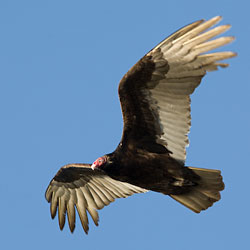
Turkey Vulture (Cathartes aura)
“Dead animals. Smelly carcasses. Sorry sights. We’ve all seen dead animals on the side of the road after they were struck by vehicles. It's not a pleasant sight, but have you ever wondered what happens to the bodies of animals that die?
One answer to this question may be turkey vultures. These large birds don't usually kill their own food but rely on disease, predators, and careless drivers to provide them with the carcasses on which they feed. As a result, they often are associated with death.
When turkey vultures eat a carcass, however, they are doing the environment a favor by preventing the possible spread of disease to other animals, possibly even to ourselves.
But to find carcasses, turkey vultures must often search large areas each day. Flying, which permits them to cover a lot of ground, is tiring and takes lots of energy. To conserve energy, vultures avoid flapping flight by soaring along bluffs on upwelling air currents and in columns of rising warm air called thermals. Also, unlike other birds, turkey vultures have an excellent sense of smell, which permits them to locate dead animals quickly.
Turkey vultures use their adaptations to efficiently find and consume dead animals, removing those carcasses from our roadsides, fields, and forests.
In the past, turkey vultures have been thought of as harbingers of evil and darkness. Instead, we should value turkey vultures, nature's cleaning crew, for their valuable service.” From: http://www.nps.gov/miss/naturescience/turkeyvulture2.htm
_________
This week’s Amazing Fact:
Buzzard, Bat, and Bumblebee
 “If you put a buzzard in a 6-foot-by-8-foot pen that’s entirely open at the top, the bird, despite its ability to fly, will be an absolute prisoner. Why? A buzzard always begins flight with a run of 10 to 12 feet. Without this runway, it will not even attempt to fly—but will remain a prisoner for life, waddling around in a small jail with an open top.
“If you put a buzzard in a 6-foot-by-8-foot pen that’s entirely open at the top, the bird, despite its ability to fly, will be an absolute prisoner. Why? A buzzard always begins flight with a run of 10 to 12 feet. Without this runway, it will not even attempt to fly—but will remain a prisoner for life, waddling around in a small jail with an open top.
The common bat is a remarkably nimble night creature in the air, but it cannot take off from a level place. If it’s placed on flat ground, all it can do is shuffle about, helplessly and painfully, until it reaches some slanted ground from which to launch itself.
And a bumblebee, if dropped into an open glass tumbler, will stay there until it dies! It never sees the means of escape at the top, but persists in trying to find some way out through the sides near the bottom. It will continue to seek until it completely destroys itself through exhaustion.
Many people are like the buzzard, the bat and the bumblebee. They are struggling about with all their problems and frustrations, not ever realizing that the answer for victory and freedom is right there “above” them.
Philippians 4: 6-7 “Be careful [anxious] for nothing; but in everything by prayer and supplication with thanksgiving let your requests be made known unto God. And the peace of God, which passeth all understanding, shall keep your hearts and minds through Christ Jesus.””
________

BirdNote. Weekly Preview: Jaywalkers, Blackbirds, and Corkscrews ...
Upcoming Shows:
Violaceous Trogon
SUNDAY. Trogons Nest with Wasps by Bob Sundstrom LISTEN NOW ►
Blackpoll Migration
MONDAY. Blackpoll Warbler Migration by Todd Peterson LISTEN NOW ►
Eurasian Blackbird
TUESDAY. Blackbird, by Paul McCartney by Ellen Blackstone LISTEN NOW ►
Blue Jay
WEDNESDAY. Jaywalking by Frances Wood LISTEN NOW ►
Blue-gray Gnatcatcher
THURSDAY. Corkscrew Swamp Sanctuary by Dennis Paulson LISTEN NOW ►
FRIDAY. Sounds of the Amazon by Adam Sedgley LISTEN NOW ►
Palila
SATURDAY. Saving Hawaii's Birds - American Bird Conservancy by Bob Sundstrom LISTEN NOW ►
________
On This Day:
Benny Goodman brings jazz to Carnegie Hall, Jan 16, 1938:
“Jazz has been called "America's classical music," a label that does more than just recognize its American origins. The label also makes the case that jazz is worthy of aesthetic consideration alongside music usually thought of as "classical." In the current era, when programs of Duke Ellington and J.S. Bach often draw the same highbrow crowds, that argument hardly seems controversial. In the 1930s, however, the notion was almost laughable, which is what made Benny Goodman's January 16, 1938, concert at New York City's famed Carnegie Hall so revolutionary. Goodman and his supporting cast claimed a new place for jazz on the American cultural scene that night, in what has come to be seen as the most important jazz concert in history.
Benny Goodman was at the absolute height of his legendary career when his publicist first suggested they book Carnegie Hall. He was a star on radio, on stage and on film, and the label "King of Swing" was already attached permanently to his name. So outlandish was the suggestion that a jazz band might play inside the citadel of American high culture, however, that Goodman is said to have laughed the idea off at first. Once he warmed to the notion, however, Goodman threw himself into the task with characteristic passion. In addition to numbers from the regular repertoire of his own band—which included the legendary Harry James on trumpet, Lionel Hampton on vibraphone and Gene Krupa on drums—Goodman planned a program featuring a brand-new "Twenty Years of Jazz" piece and an extended jam session featuring stars of the Duke Ellington and Count Basie orchestras. The concert sold out weeks in advance, with the best seats fetching $2.75.”
________
The Persian Gulf War begins, Jan 16, 1991:
“At midnight in Iraq, the United Nations deadline for the Iraqi withdrawal from Kuwait expires, and the Pentagon prepares to commence offensive operations to forcibly eject Iraq from its five-month occupation of its oil-rich neighbor. At 4:30 p.m. EST, the first fighter aircraft were launched from Saudi Arabia and off U.S. and British aircraft carriers in the Persian Gulf on bombing missions over Iraq. All evening, aircraft from the U.S.-led military coalition pounded targets in and around Baghdad as the world watched the events transpire in television footage transmitted live via satellite from Baghdad and elsewhere. At 7:00 p.m., Operation Desert Storm, the code-name for the massive U.S.-led offensive against Iraq, was formally announced at the White House.
On March 20, 2003, a second war between Iraq and a U.S.-led coalition began, this time with the stated U.S. objective of removing Saddam Hussein from power and, ostensibly, finding and destroying the country's weapons of mass destruction. Hussein was captured by a U.S. military unit on December 13, 2003. No weapons of mass destruction were found. Although U.S. President George W. Bush declared an end to major combat operations in Iraq on May 1, 2003, an insurgency has continued an intense guerrilla war in the nation that has resulted in thousands of coalition military, insurgent and civilian deaths.”
_______
Yesterday:
It was another cold morning, but Miss Priss has to be toted around in a car a few times before she goes to Adoption Day on Saturday. Misty and I wore our thick coats, and I warmed up the car before putting Miss Priss in there in her carrier. Off we went to pick up Jay. Miss Priss stayed in the car while Misty and I had our walk while waiting for Jay to get ready. He always says he is ready, but he never is.
Prissy didn’t make a fuss or yowl and howl in the car, and just seemed to be interested in the big wide world outside the car windows. But she did have Misty sitting right next to her carrier, so that might have been a comfort to her. Misty’s calmness might have made it seem like a normal event, and nothing to fear.

The RVport was ugly and I am glad it is all gone. That lattice was two layers thick with clear vinyl sandwiched between them, and it was a great wind barrier.
It was very cold, and it had been raining, so we had to change into dry gloves halfway. Our fingers were freezing. My job was to take the screws and nails from Jay as he removed them, and also to pull with a crowbar any left in the lumber when it was taken down. Now the houses really look like they are separate.
Those fields behind the houses are a straight shot to the North Pole winds, so it was very chilly working out there, and that was enough for the day.

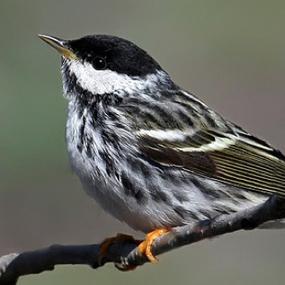
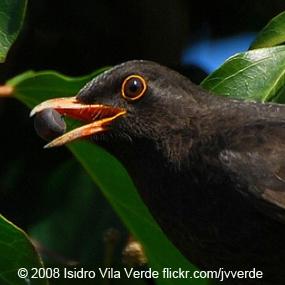
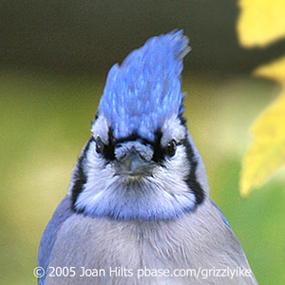
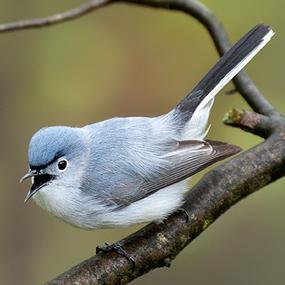

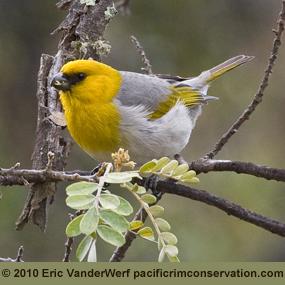
















No comments:
Post a Comment